40th heavy howitzer battery
The development of artillery took place continuously throughout the Great War. The artillery units, the number of cannons used, the firepower were constantly increasing. Accordingly, the organization of the artillery also evolved in the Monarchy. There were basically three types of artillery units organized. Field cannon, howitzer and heavy artillery units. These differed from each other mainly in the cannon material, and in connection with this, of course, in terms of what targets and conditions they were able to overcome. The cannons could be used on basically flat trajectories against relatively close targets. The howitzers and mortars, on the other hand, fired larger projectiles on a steep trajectory. They were able to eliminate fortified positions, and they could operate in mountainous terrain, crossing over hills. Most of the heavy artillery cannons were the same 15 cm howitzers as those of the howitzer regiments. In addition, they were given some larger caliber guns. Occasionally, earlier constructed, outdated large-caliber guns were used.

Due to the developments and reorganizations, the amount, position and even numbering of the artillery regiments were constantly changing. As a result, cohesion within units of regularly changing composition has become more difficult than, for example, infantry units. I assume this is the main reason that you can come across far fewer artillery cap badges than infantry. This frequent change was confusing, and may be misleading. Due to the transfers, not even the separation between the KuK, Landwehr and Honvéd artillery took place in all cases. For example, the organization of artillery by the Honvéd forces had just begun until the beginning of the Great War. There were no Howitzer and Heavy Artillery units at all. Thus, the honvéd divisions had to be provided with appropriate artillery through transfers. Thus, the Hungarian (Croatian) command language did not prevail at all in these units, for example. The staff was also mostly completely mixed.
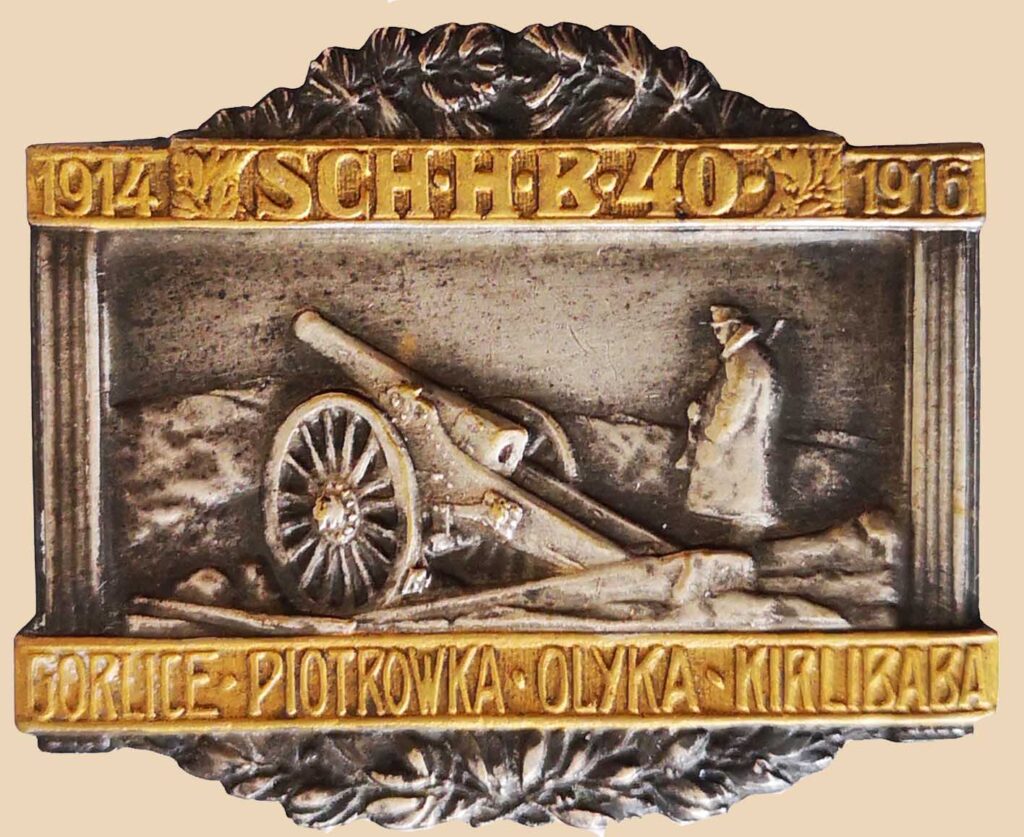
I provided information about all of this because I recently received photos of an officer from the 40th Heavy Artillery Regiment. He himself was of Croatian nationality and his officers in his photos were mostly Croats or Germans. At the same time, the 40th Army Infantry Division, where the artillery unit was dislocated, consisted practically of Hungarian regiments. Until 1916, the fought in most notable battles in the places also listed on the badge. He joined the 40th Division in the summer of 1916, when they took part in the defense against the Russians in the Carpathians who had recaptured Bukovina. The photos also come from this period, from the fighting around Kirlibaba.
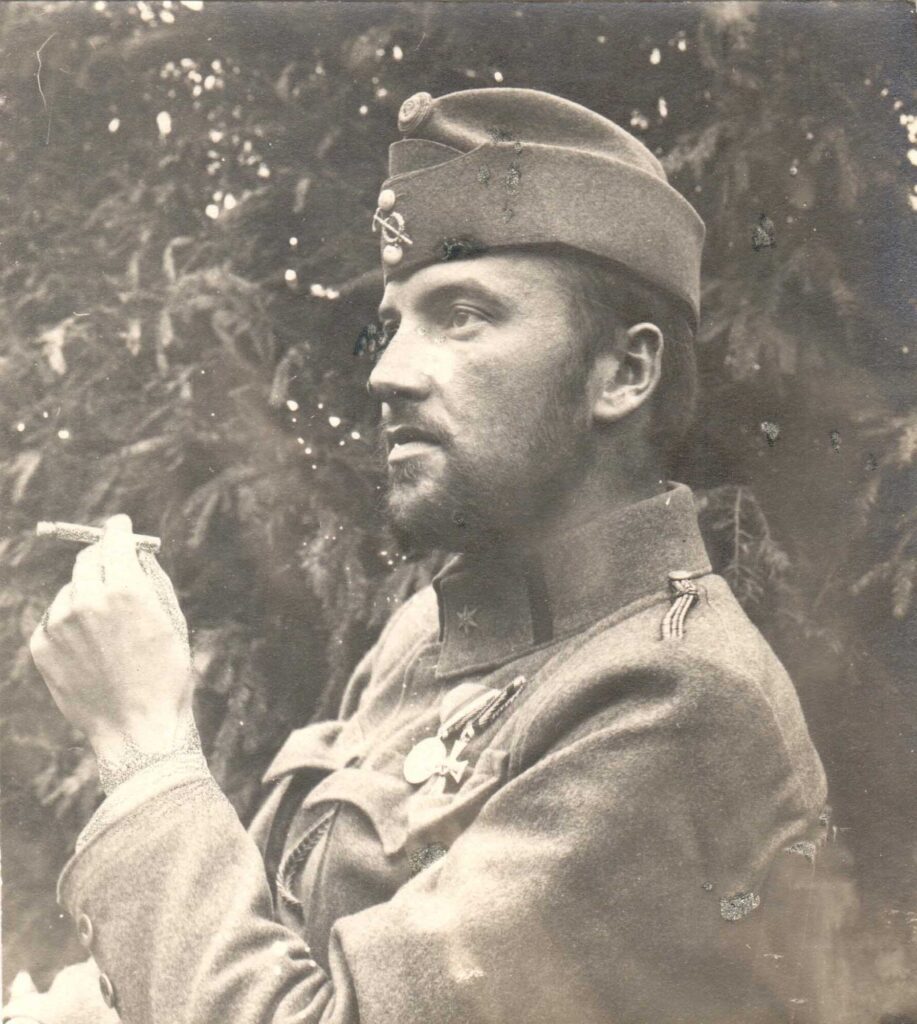
The opening image may even have inspired the badge of the 40th heavy howitzer battery: a snowy cannon in a winter forest landscape. The second photo shows the typical use of the howitzers, a gun firing on a steep trajectory. The picture was taken in August 1916 around Kirlibaba. The third image is a portrait. Unfortunately, it’s not the artillery badge on Lieutenant Glespash’s cap, it’s the 40th Infantry Division’s Kappenabzeichen. The artillery badge may have been made a bit later.

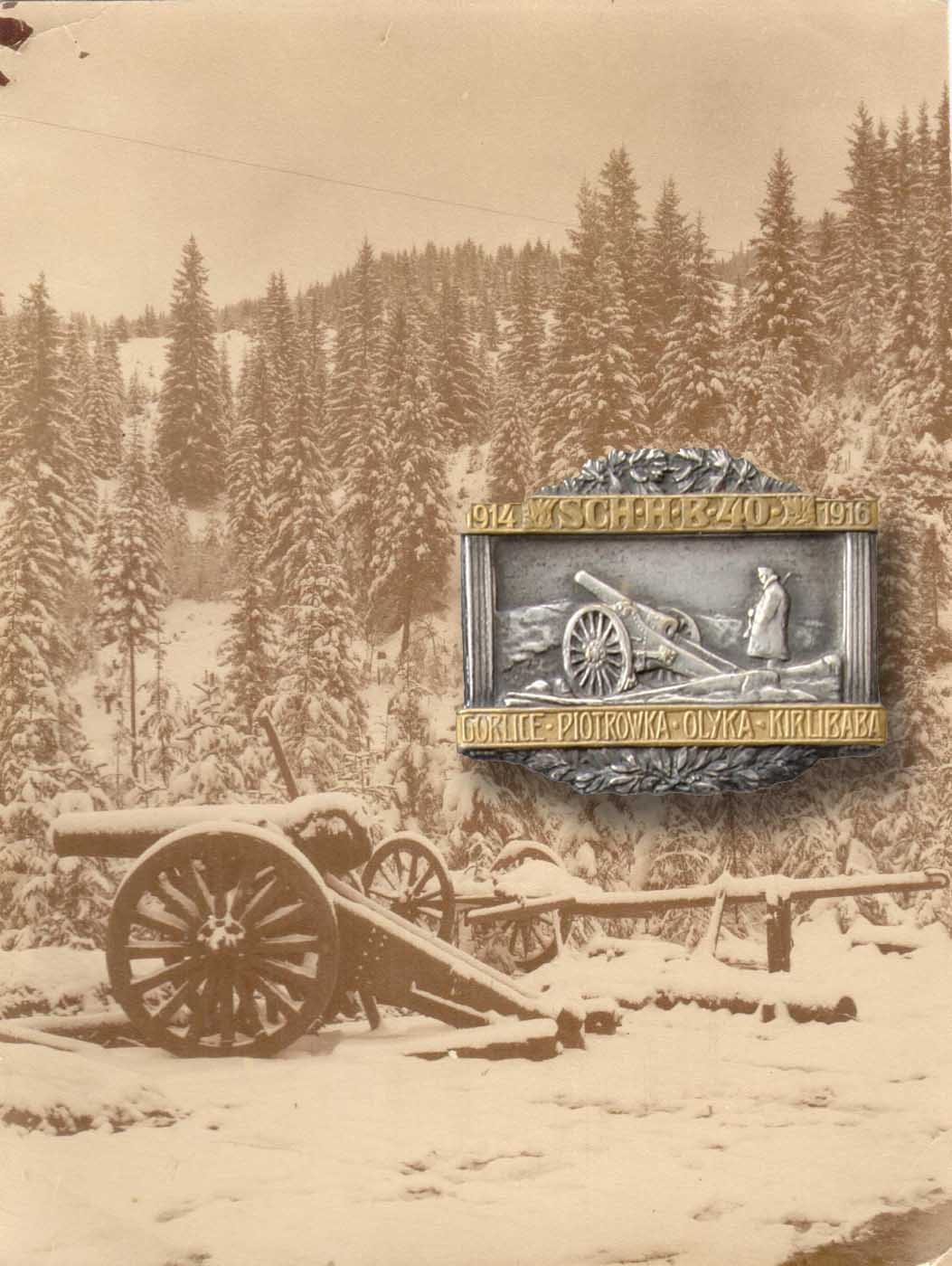
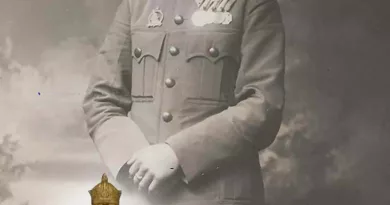
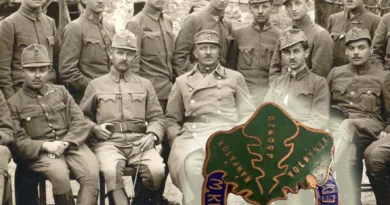

[…] Latest post Defense of Kirlibaba Prislop railway Lemberg 3. General Árpád Tamásy 40th heavy howitzer battery […]